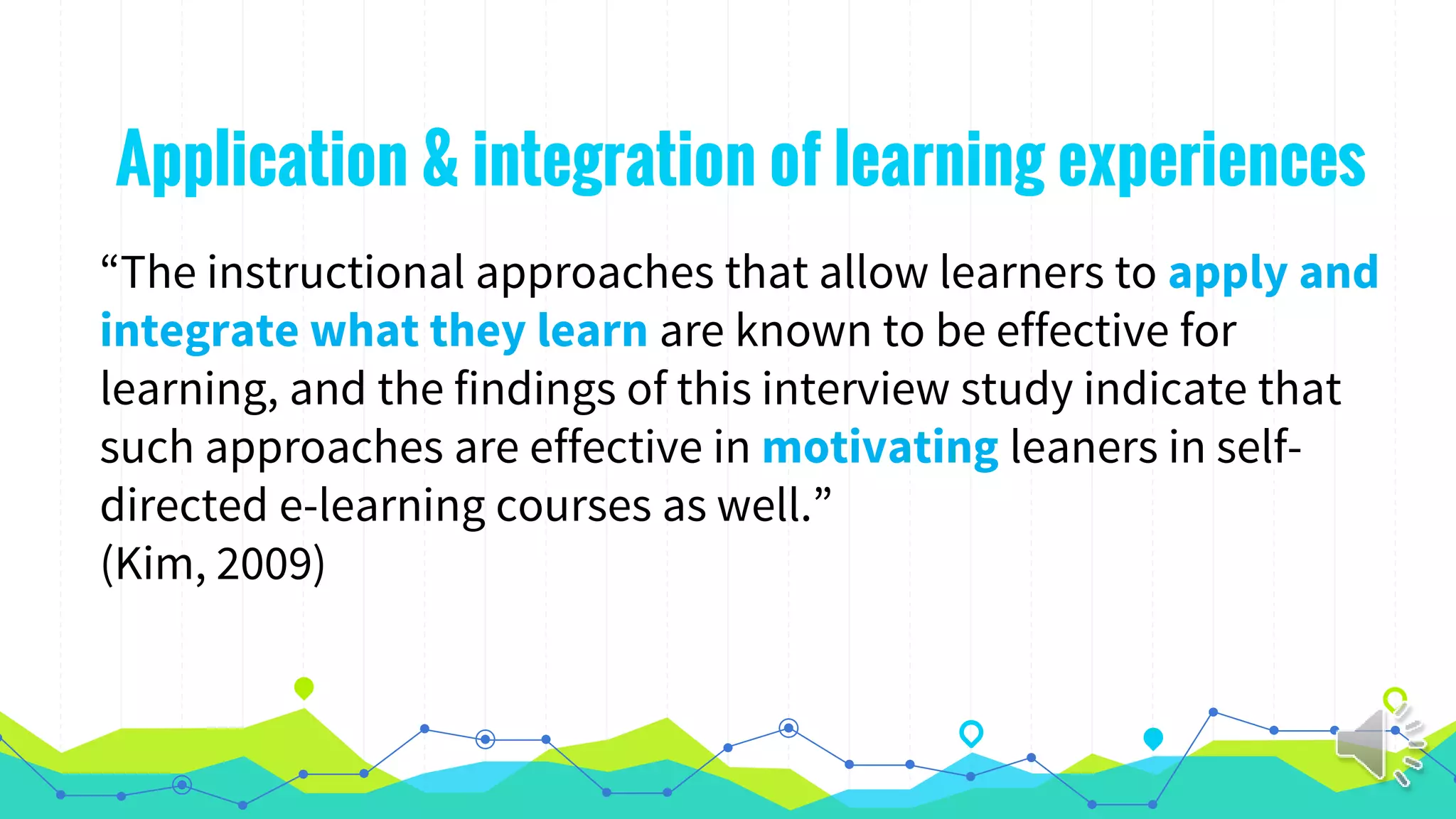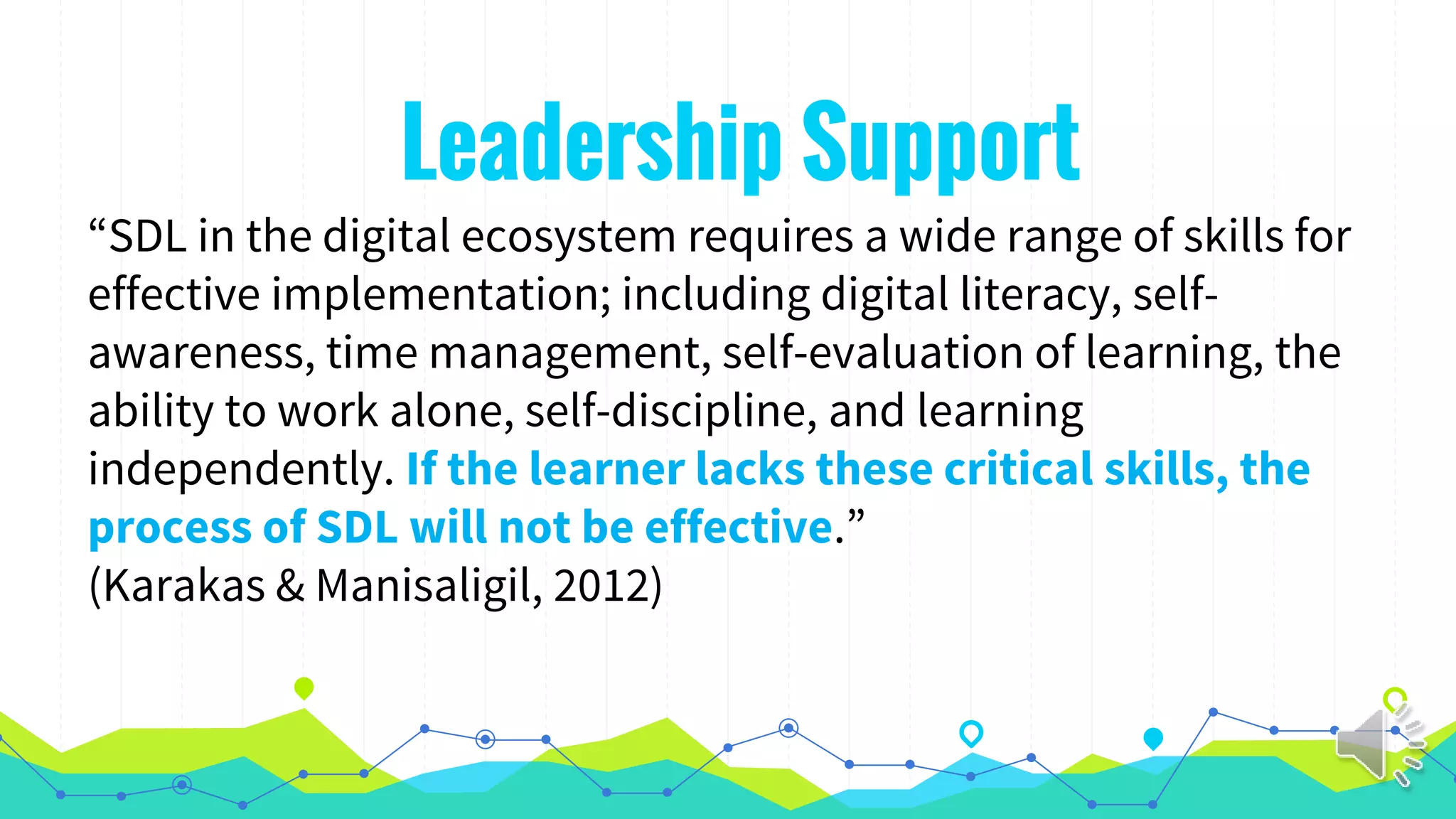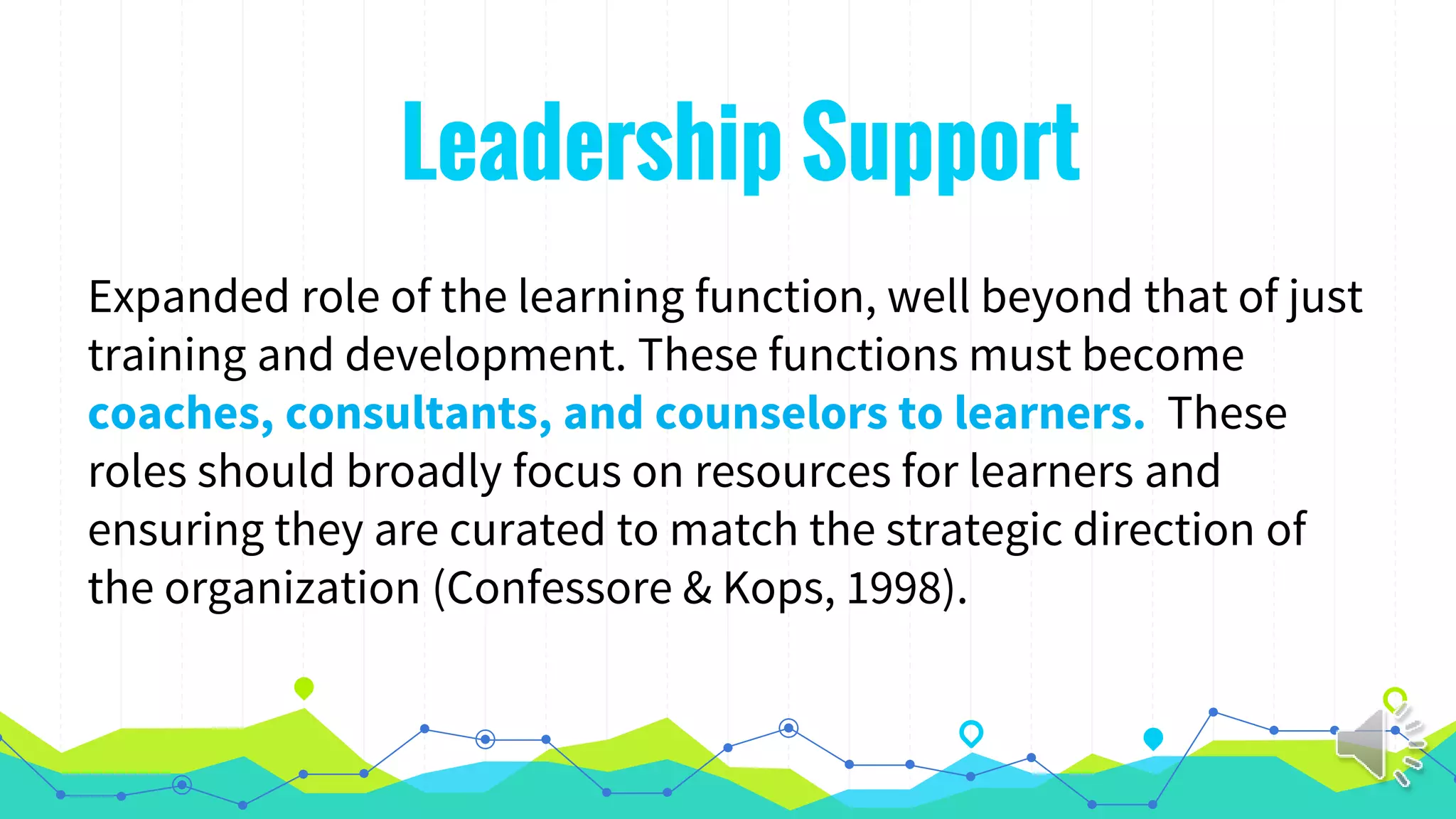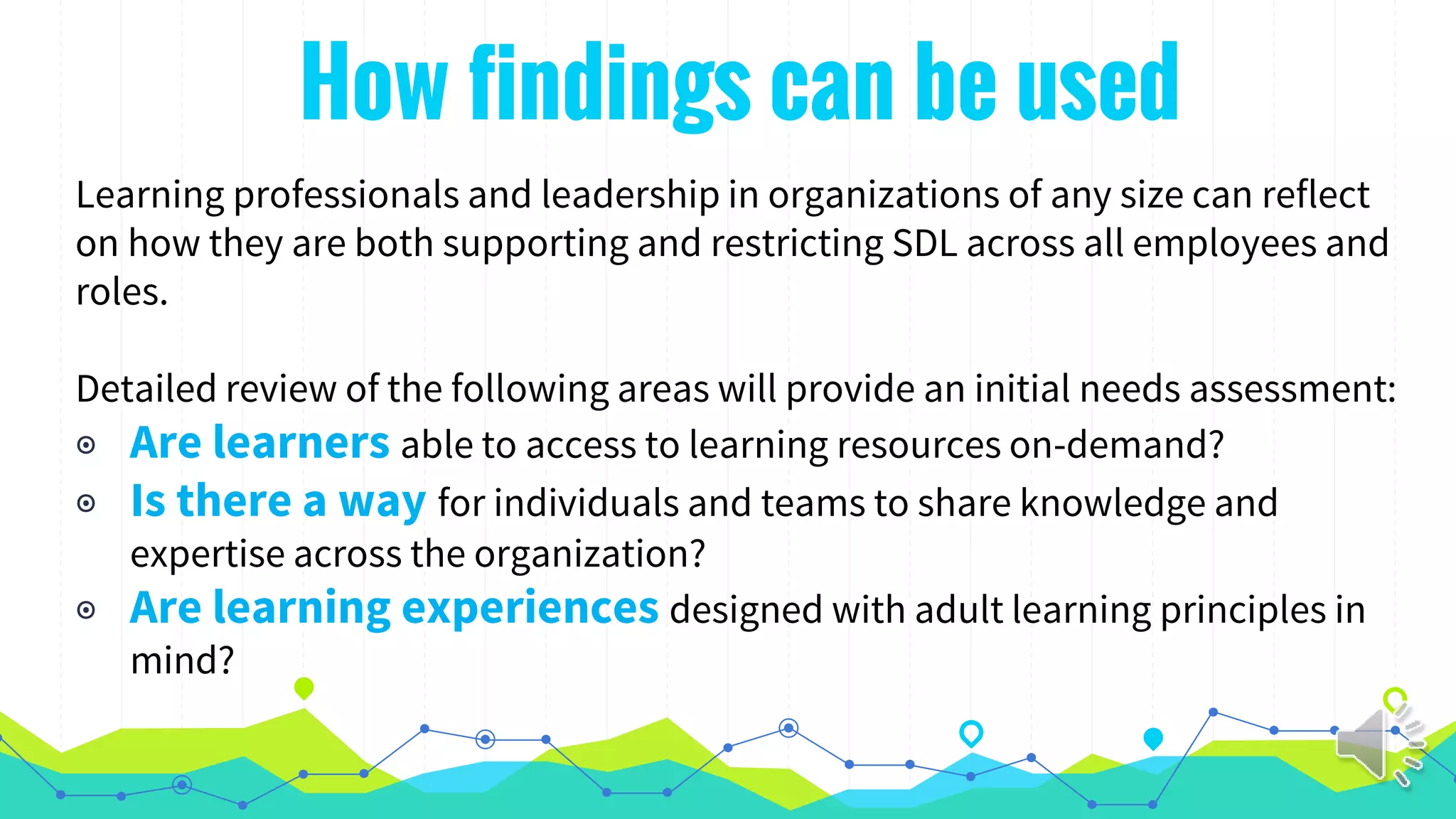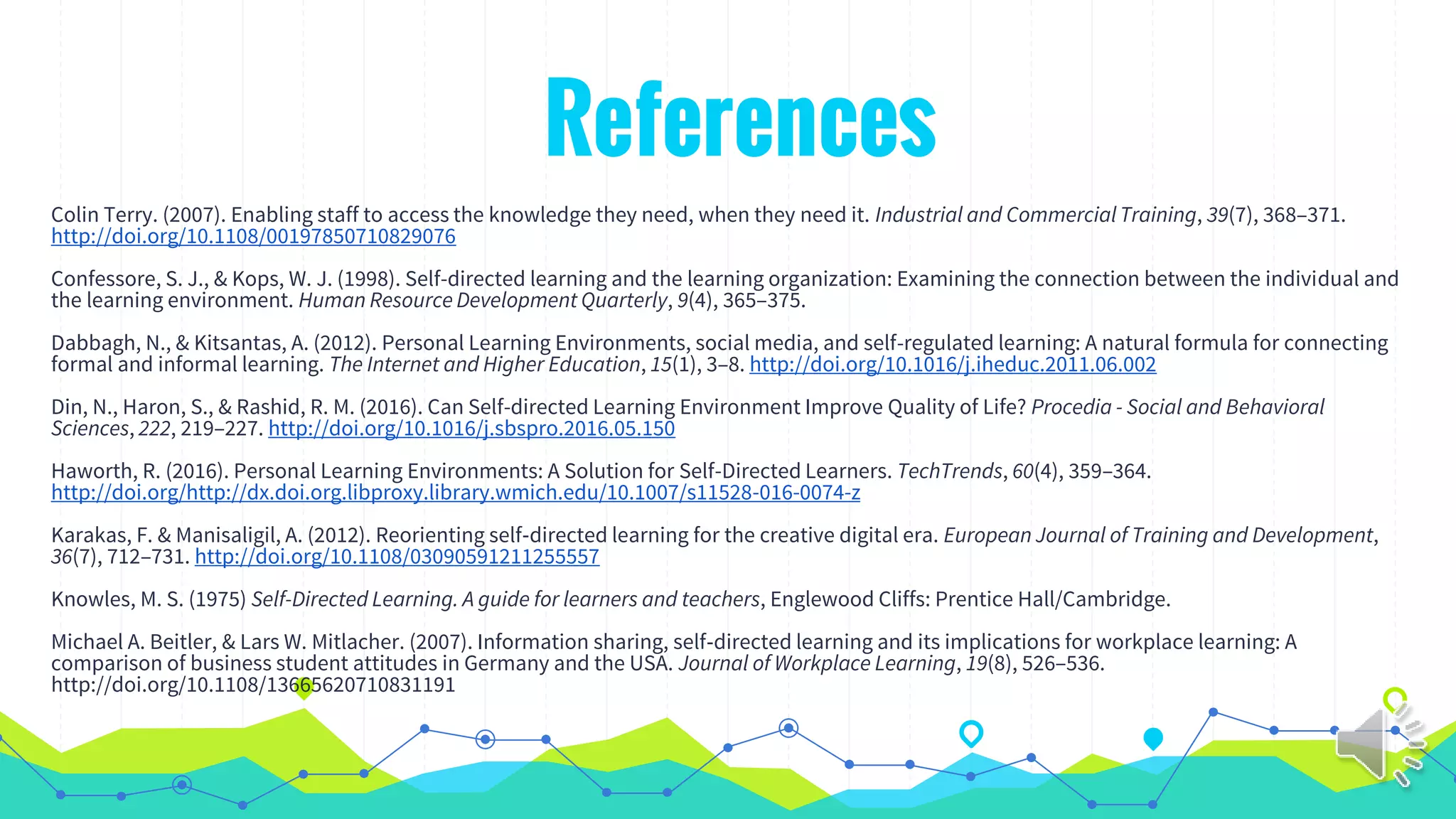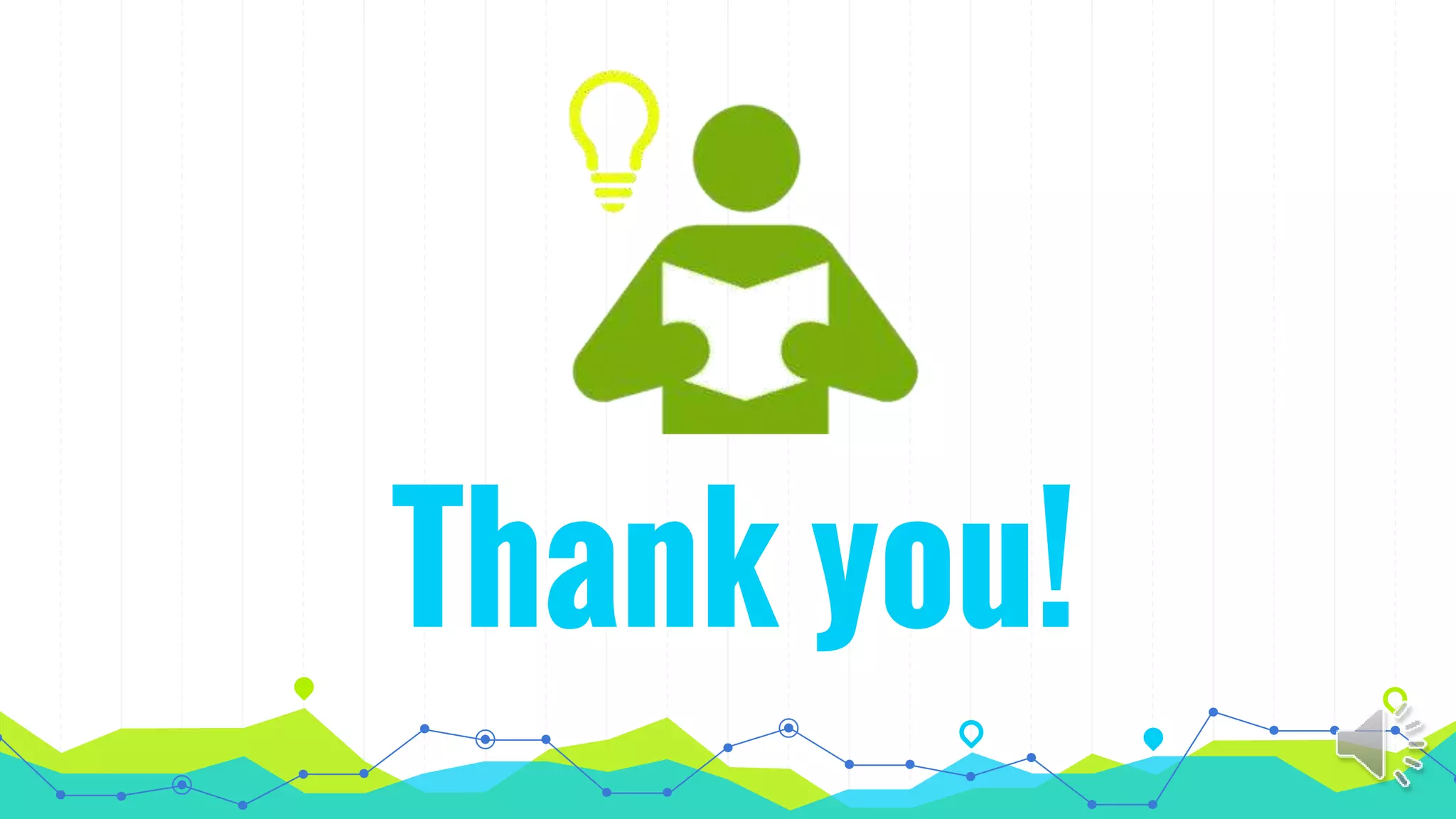Self-directed learning (SDL) describes a process where individuals take initiative to diagnose learning needs, formulate goals, identify resources, choose learning strategies, and evaluate outcomes. SDL thrives in environments that nurture and support learning for all employees. Organizations can promote SDL by providing open access to learning resources, knowledge sharing structures, learning experiences that integrate content, and leadership support. Leaders should assess how their organization currently supports or restricts SDL by reviewing access to resources, knowledge sharing capabilities, experience design, and coaching for learners.
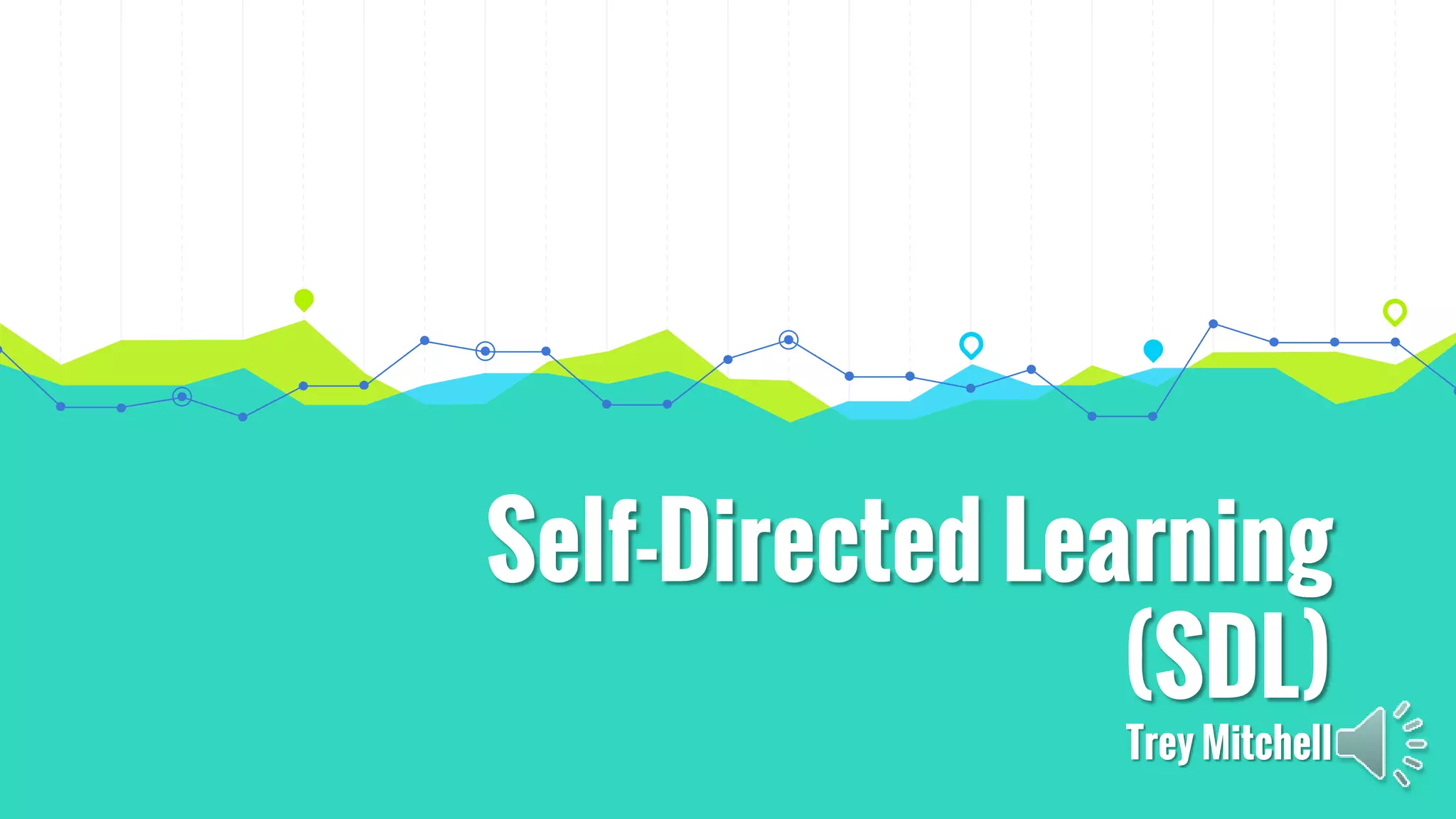
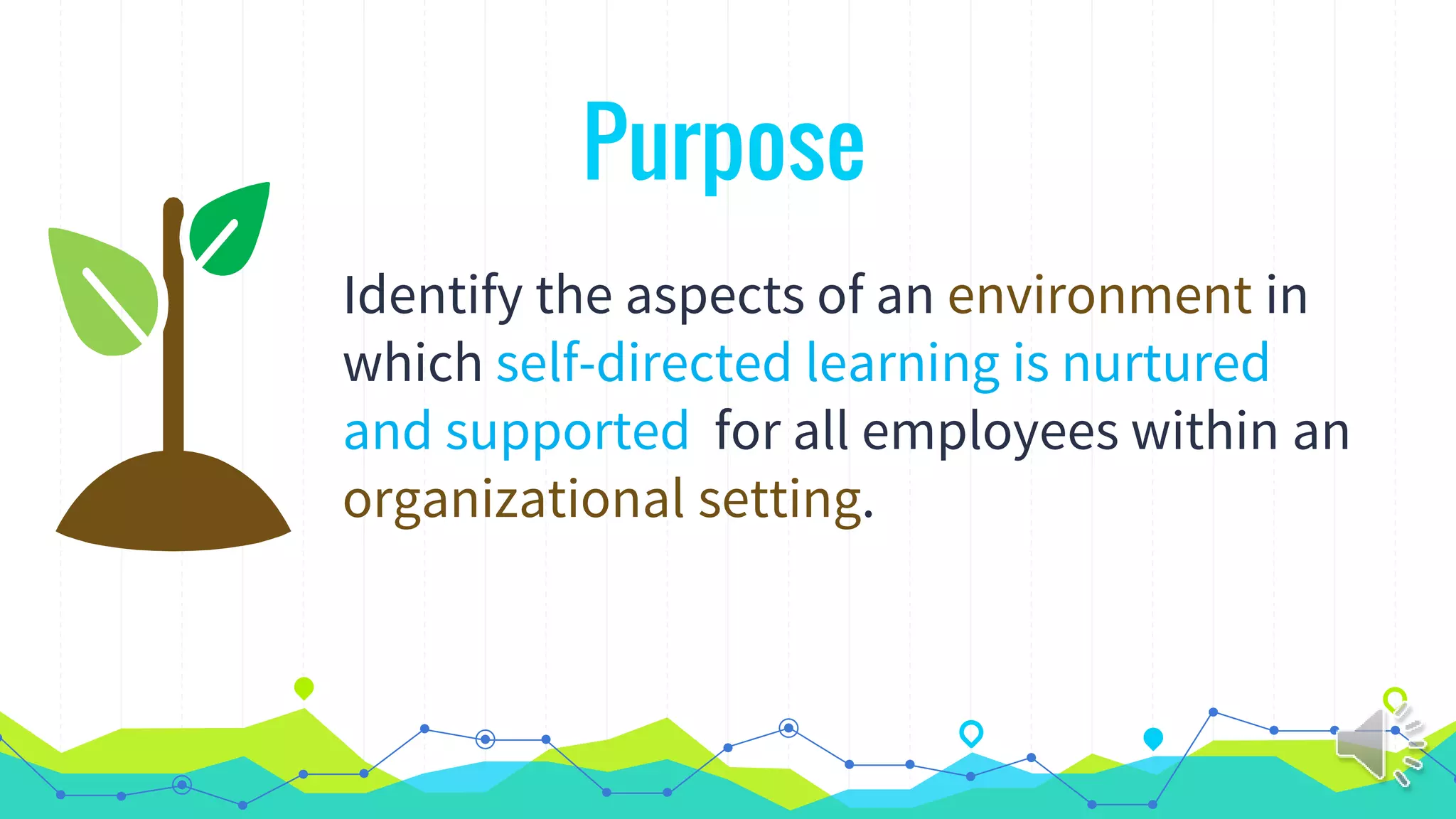
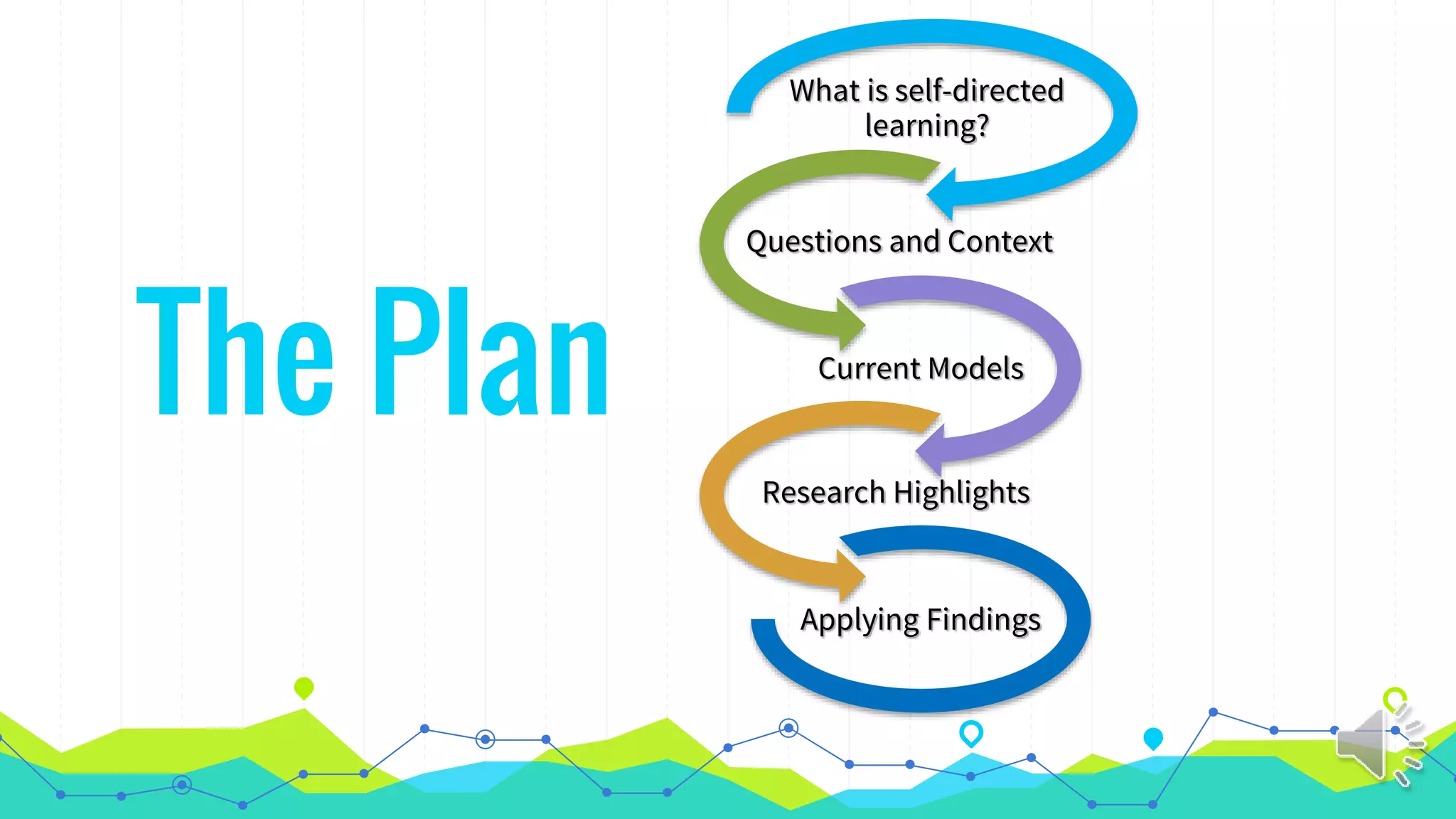
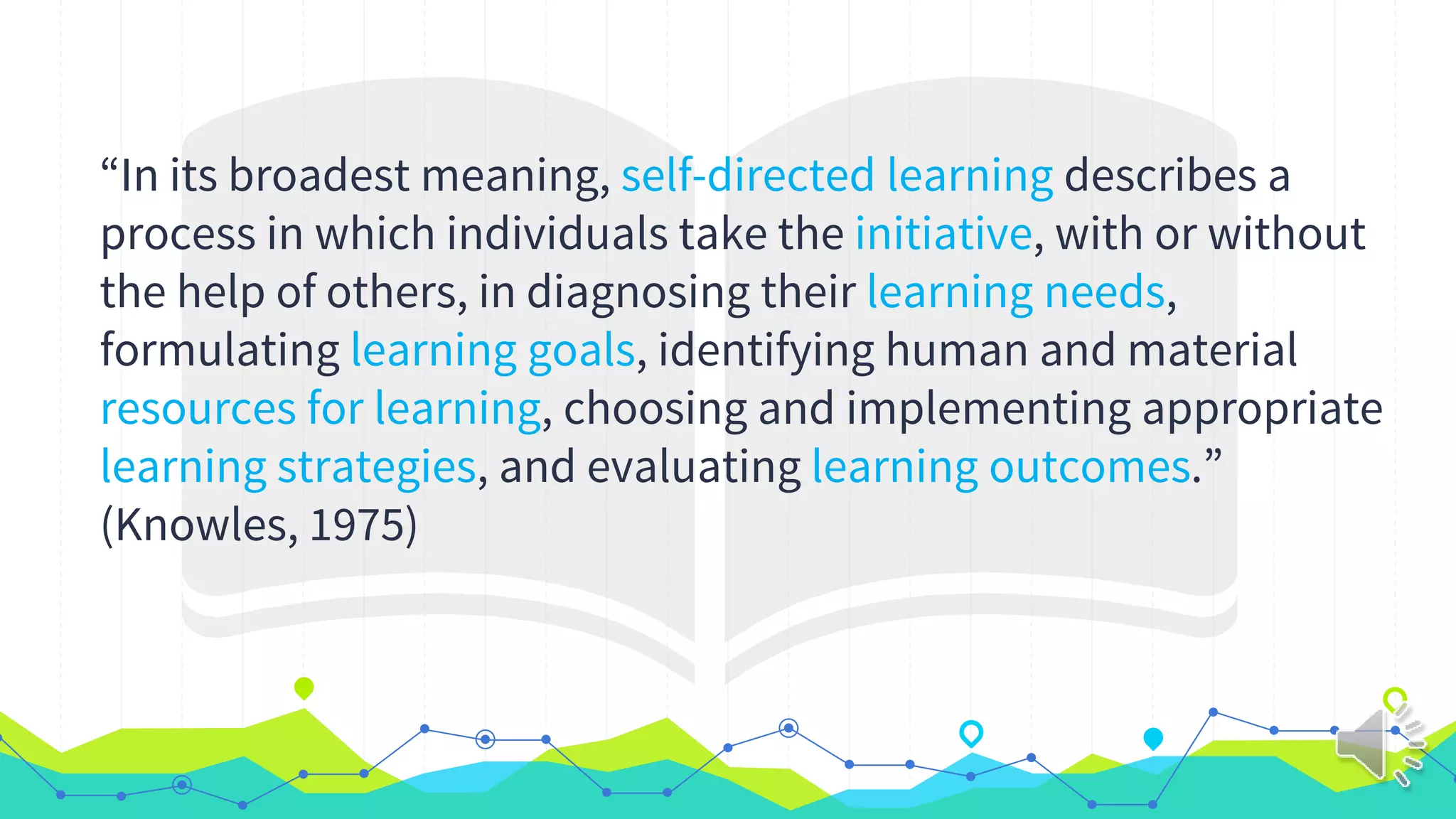
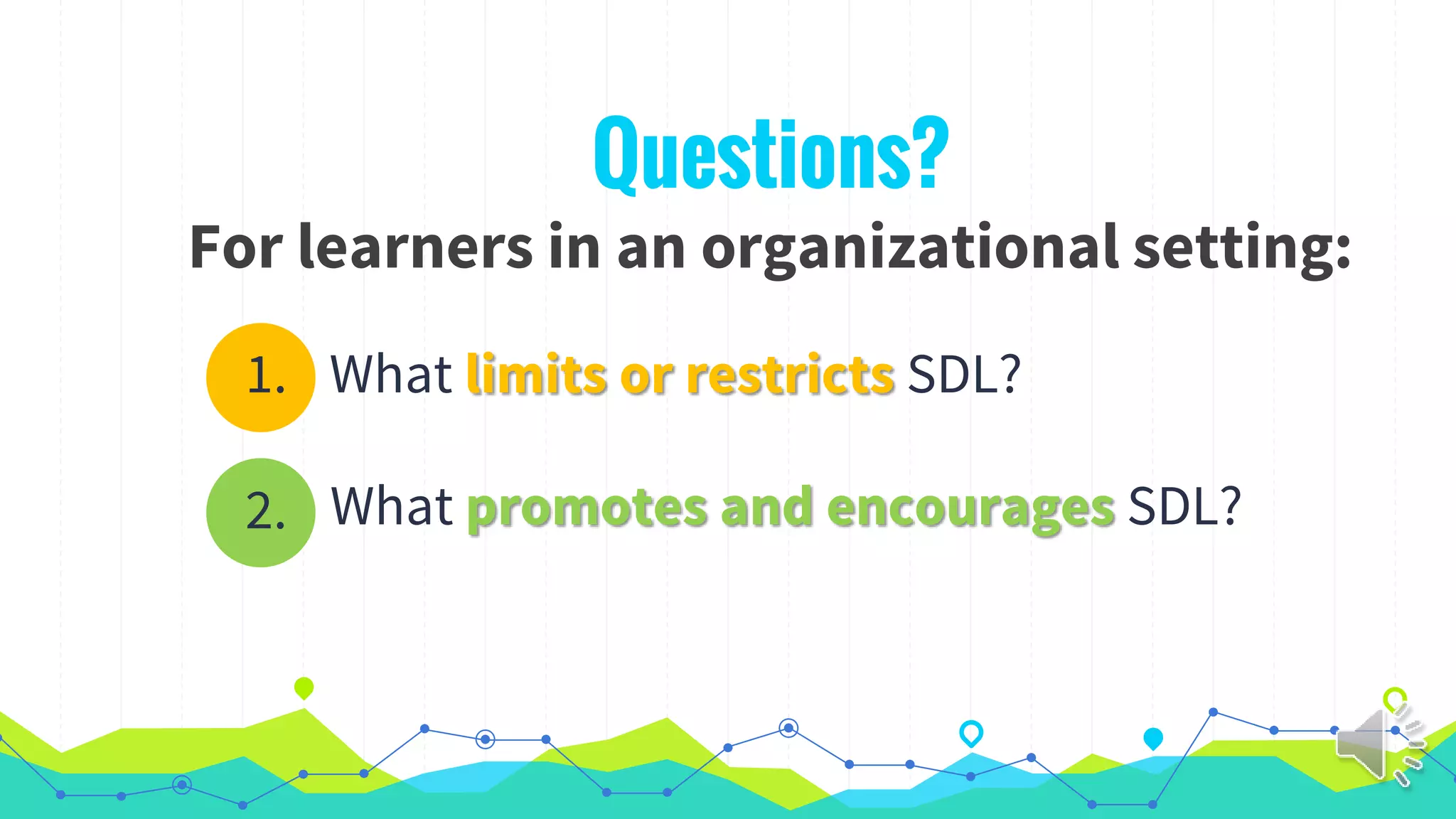
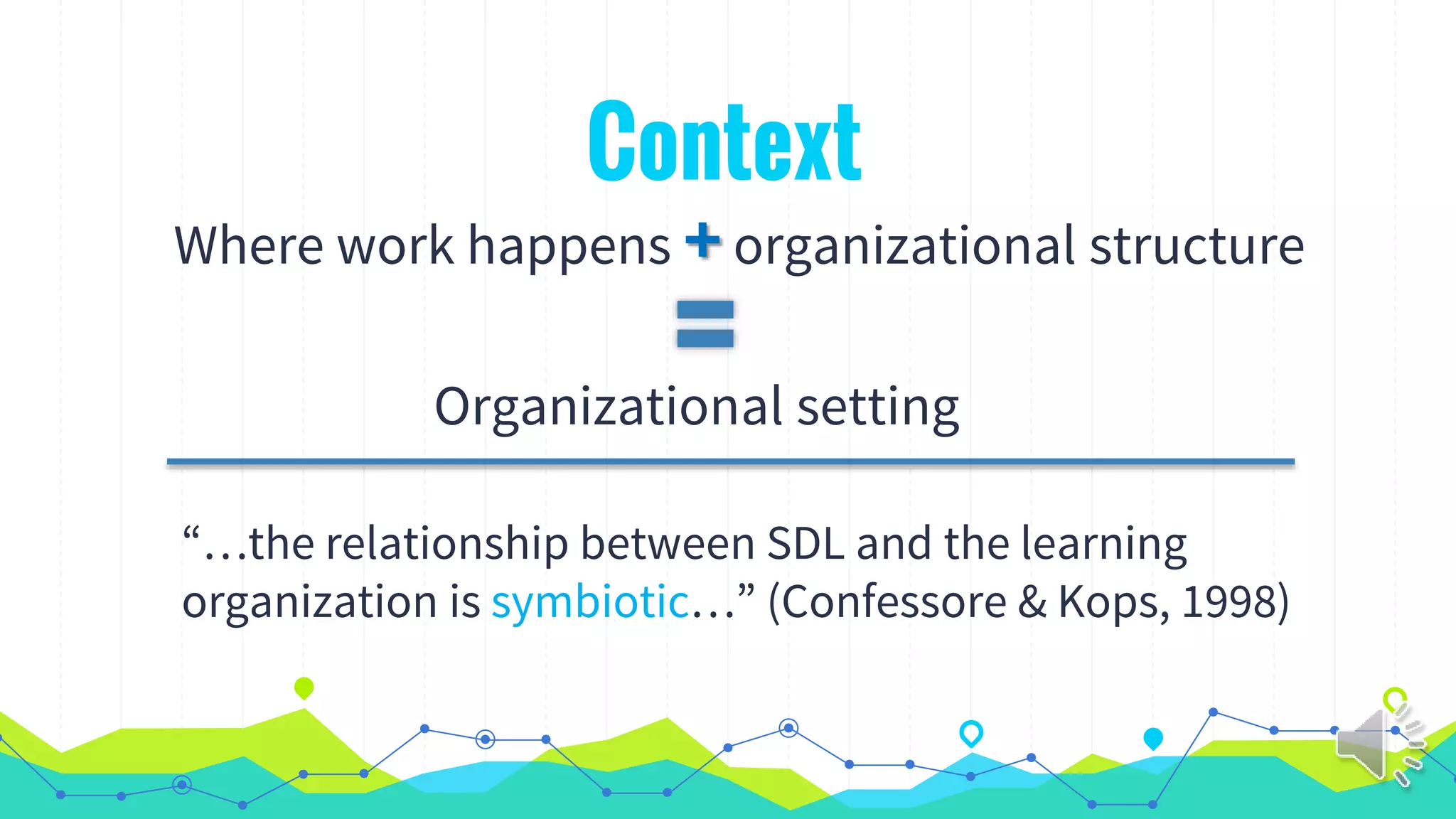
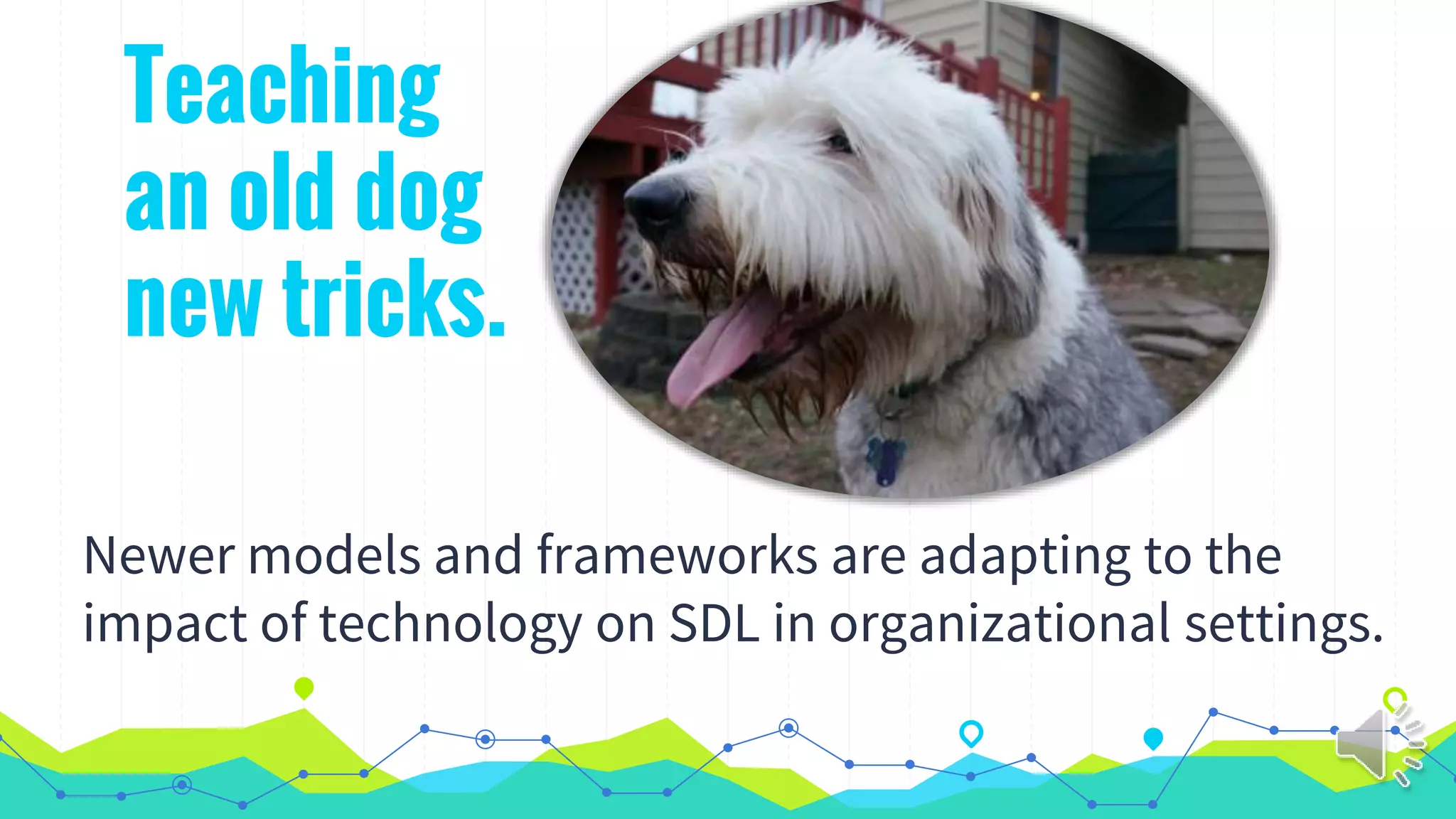
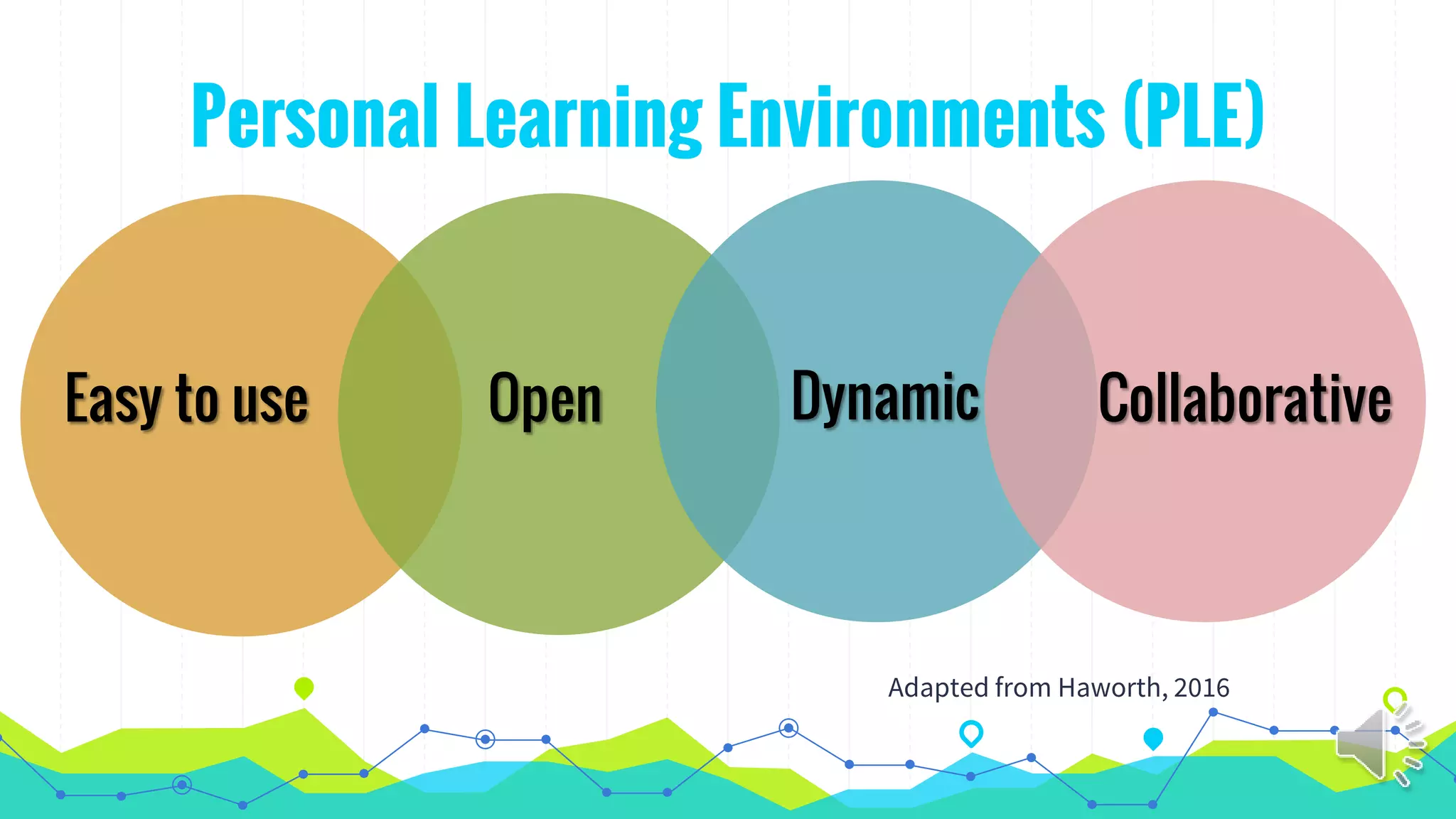
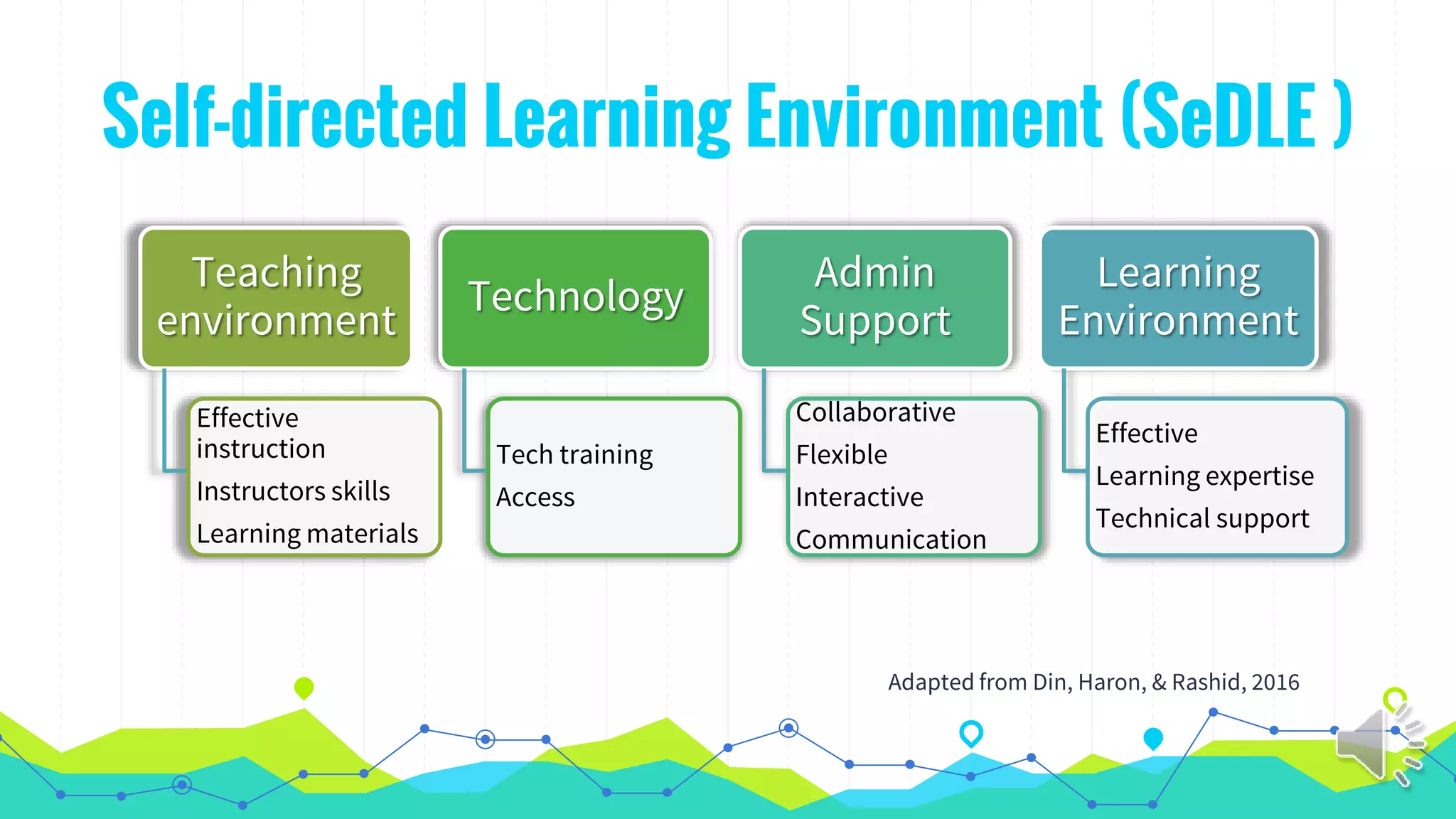
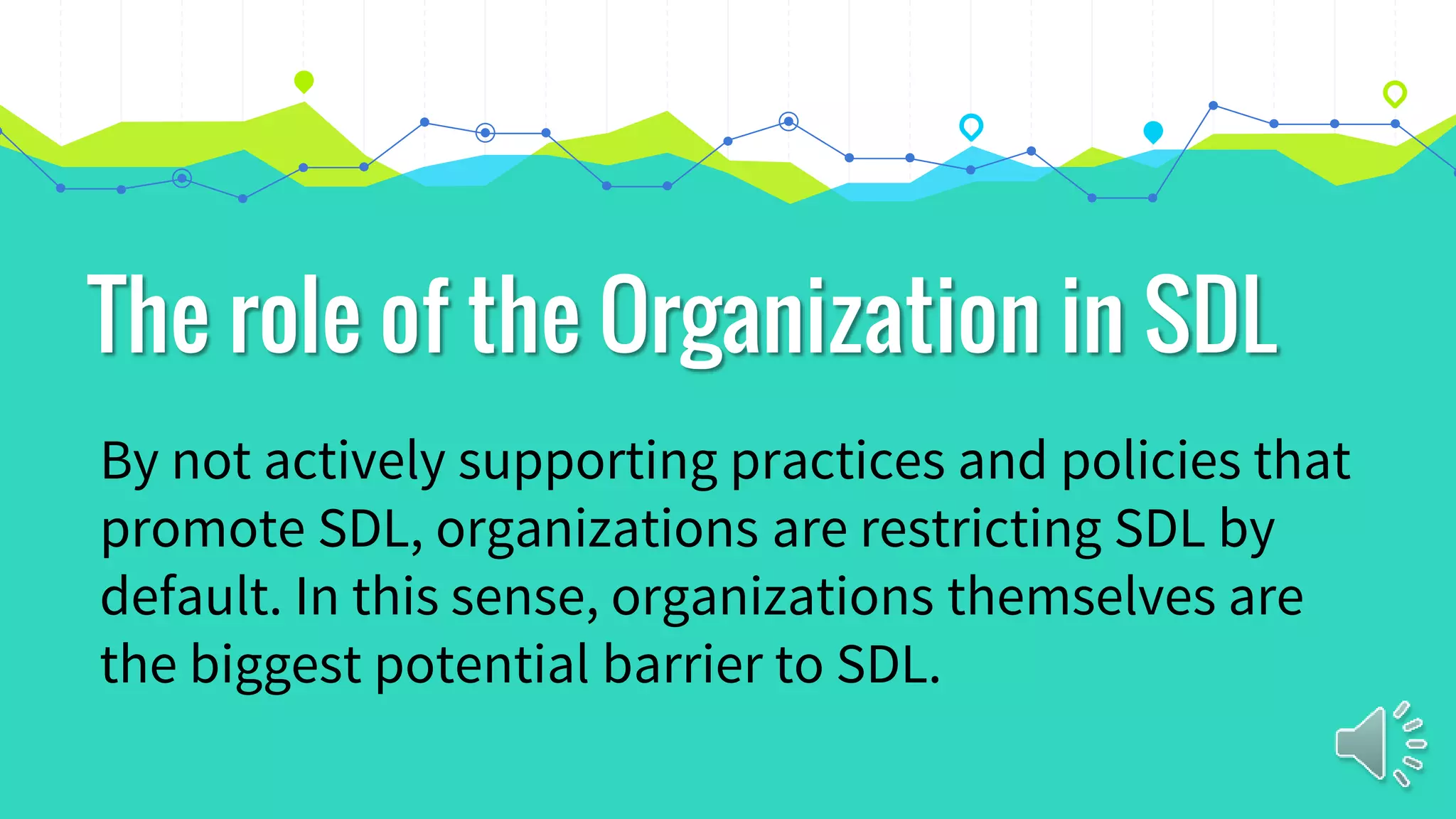
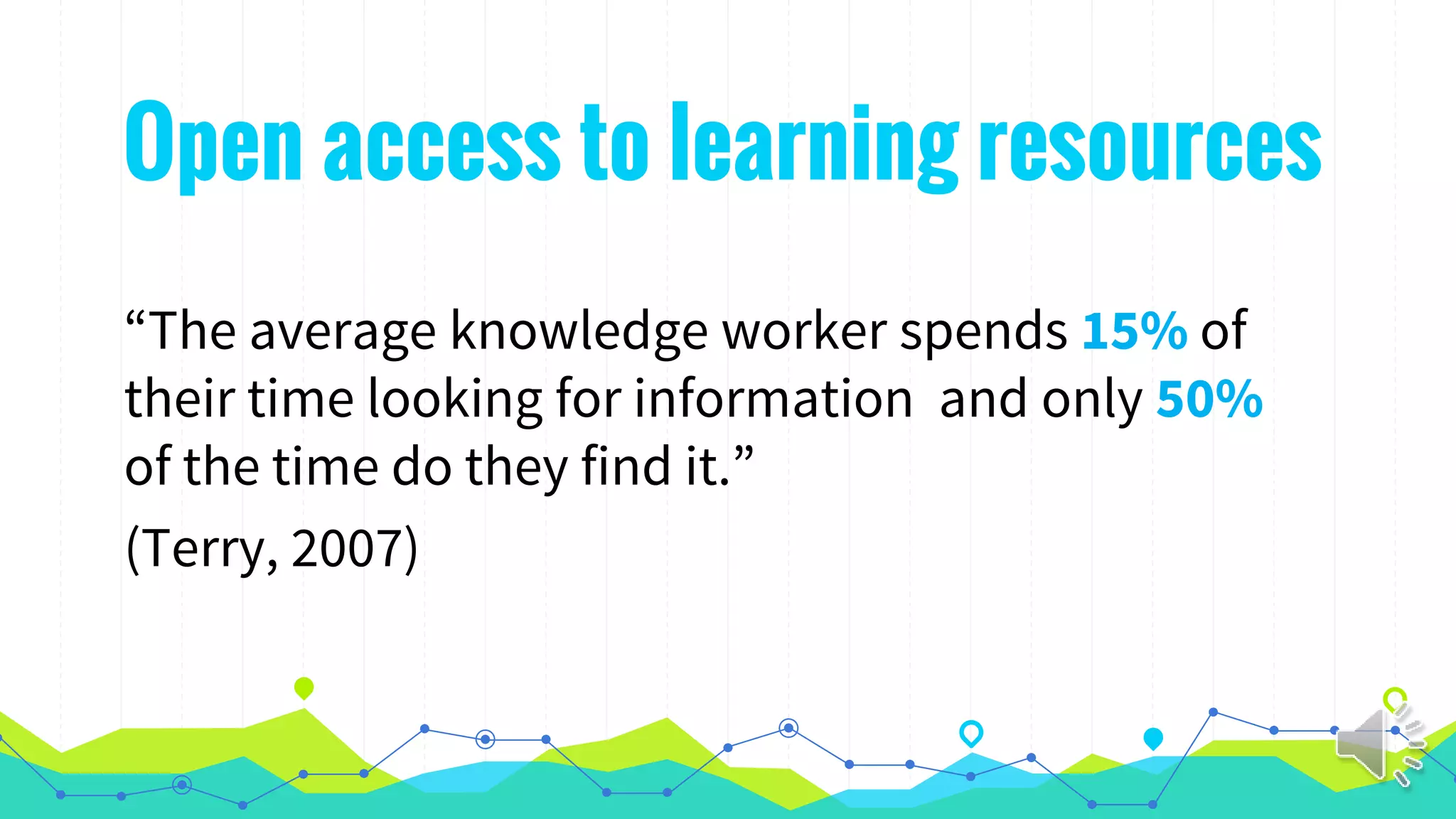
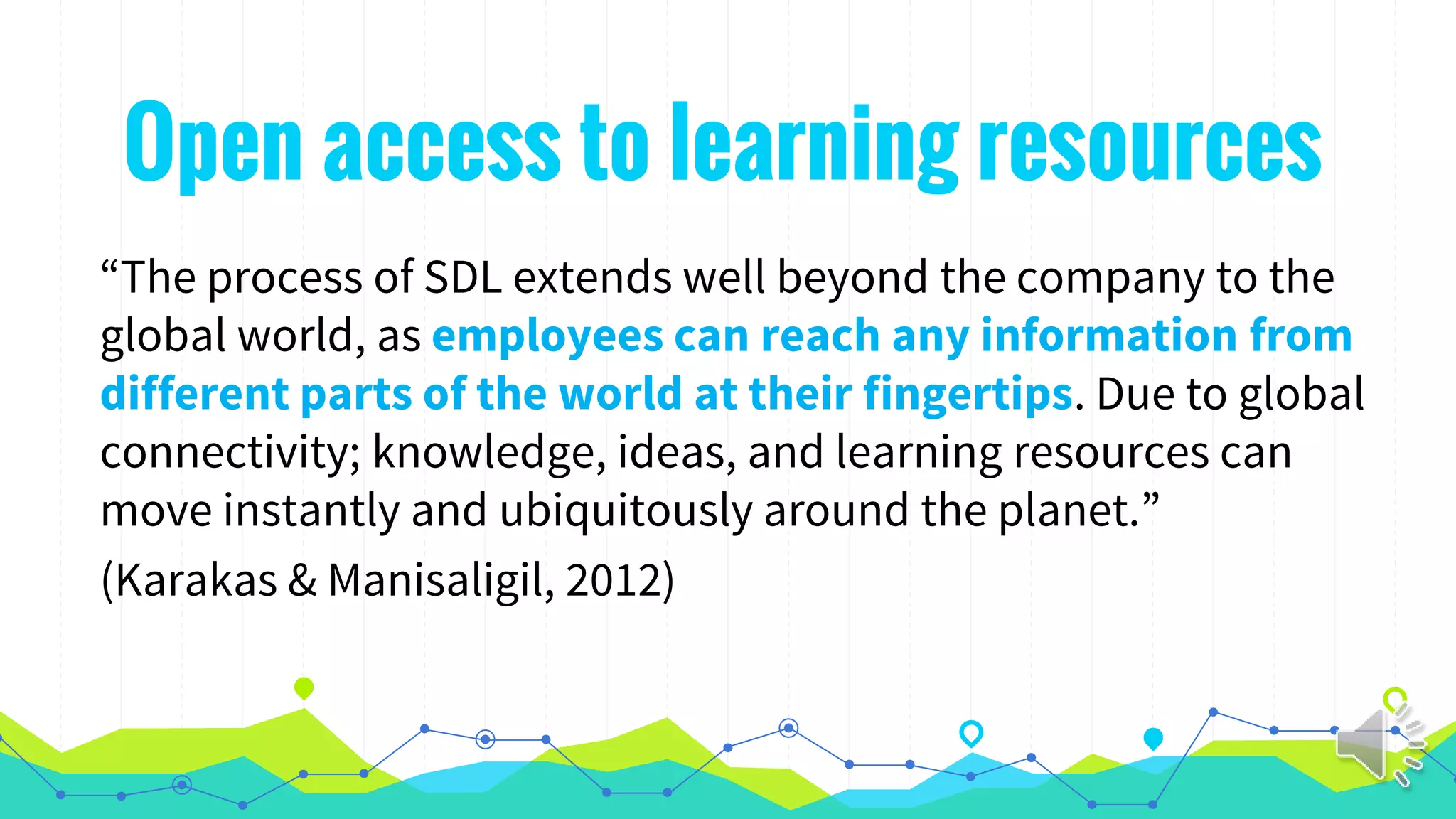
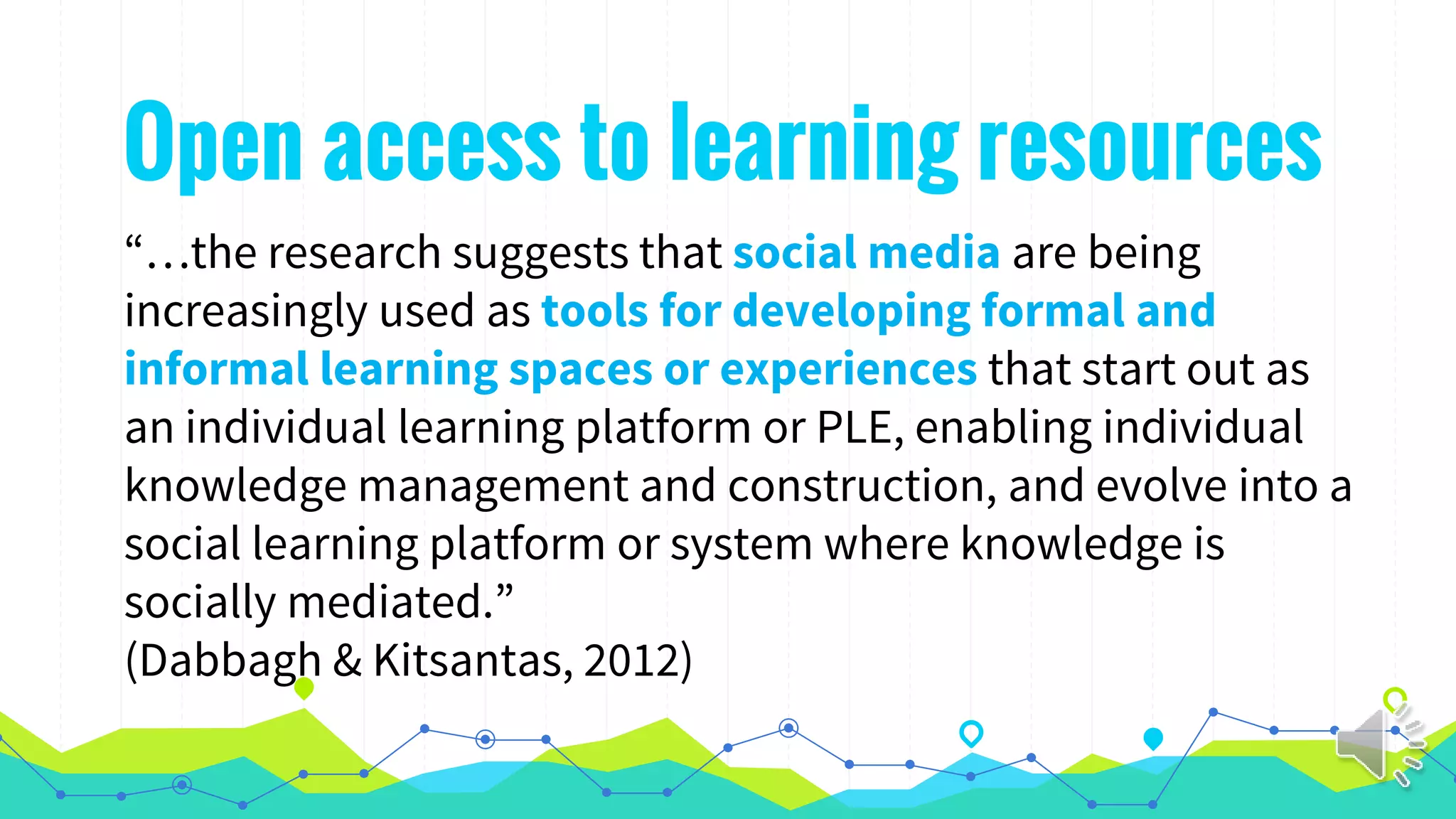
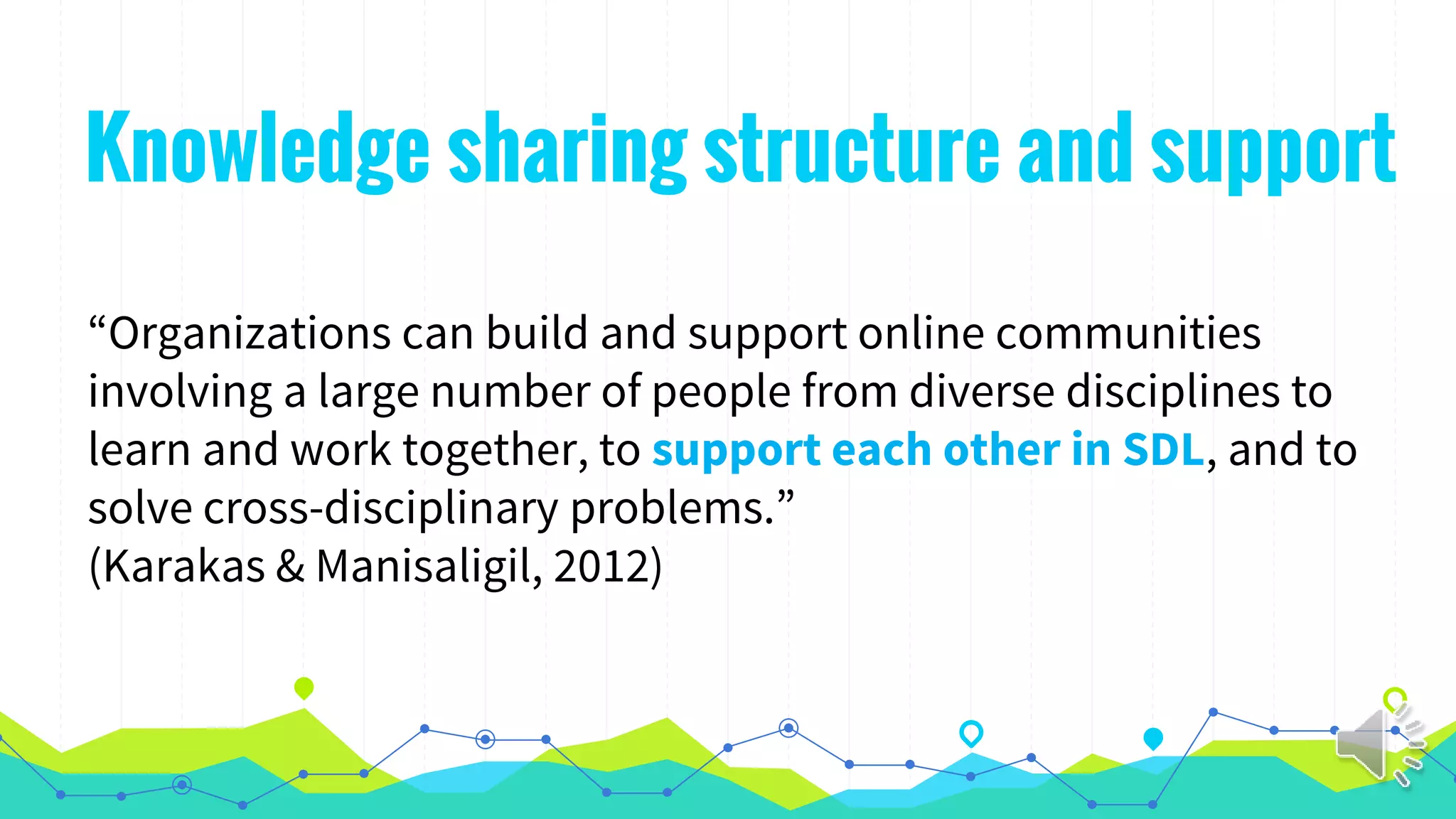
![Knowledge sharing structure and support
“This has implications beyond the classroom setting as
employees with high SDLR[self-directed learner readiness]
scores tend to distribute knowledge more freely and
frequently among their fellow workers, thus actively
supporting the creation of a learning organization.”
(Beitler & Mitlacher, 2007)](https://image.slidesharecdn.com/self-directedlearningoverview-160906141947/75/Self-directed-learning-overview-15-2048.jpg)
